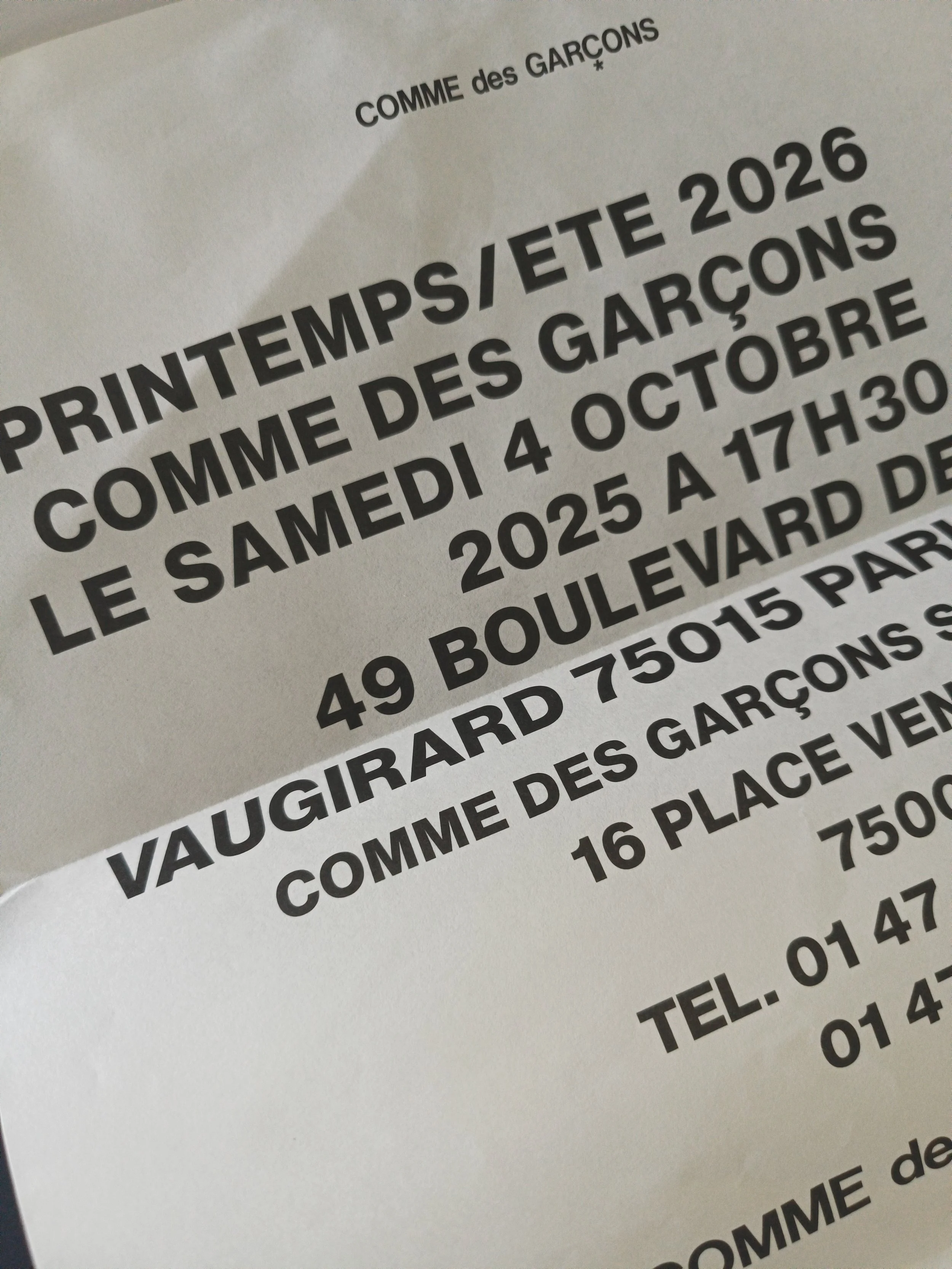119. COMME DES GARÇONS A SPACE BETWEEN ICONOGRAPHY AND ICONOLOGY.
Printemps/Ete 2026 - PARIS.
Look 8, Comme des Garçons, pretemps/ete 2026. Image courtesy of Comme des Garçons.
Textures of dough, implied and inferred motions of kneading as well as needing, waiting, rising, knocking back - as with the stages of life, shifts in progression, and a space between moving forward and looking back. As the yeasts which enable ancient starters to continue, to ferment and produce complexities of favour due to diverse and variable natures, so too does Rei Kawakubo extract from the auras of the past to form the nutrition of next.
The notion of humble means and domestic provisions, made in preparation for sustaining life over celebration of it. In Kawakubo's hands - these quiet forms usher past - alert to temperature and temperament - spongey to the eye but fragile to touch. Sparse in decoration, the two dozen looks were delicate as Delft, unglazed and porous as a bisque firing. White washed and awaiting. Their loose, tied volumes as protective covers - coatings of contents appeared more as a metaphor for containers than decorative distractions. Threads frayed from edges ripped by hand, suggestive of rags stowed for repetitive use for domestic labour - re-presented as collages of scrim, or the horse hair inners to upholstery - normally invisible to eyes expectant of status. A state of unseen was prevalent, a space akin to a vacated storage room, fluorescent lights flatly illuminated the procession with unemotive glare, flickering off to blackness when the last model departed.
A historic language of hats, further forms an echo to a past, loaded with symbolism, possibly to C17th Holland, where a series of high-brimmed versions constructed from what appeared to be traditional fine gauge rafia and moleskin - immediately suggesting reference to the famed portraits of Dutch gentry by Rembrandt and Cornelius van der Voort. Artists whose work is now considered more a gestural depiction of the subjects than a faithful representation of reality, and so does Kawakubo, where hats arrived torn and collapsed as to suggest prior trauma, surely metaphors of now. And it is here that Kawakubo brilliantly pulls a thread from both a textile of time and the repetition of history, questioning status and the stigmas attached to the etiquette of dress and society. Both Rembrandt and Kawakubo define richly internalised bodies of work, utilising media to actively interrogate portraits of a time lived, while reducing decorative elements to intensify a personal narrative and connection. Within a collection which drew upon a state of process and distress, the Japanese creator further defined a mirror to now, the glass seemingly dusty with remnants of atmospheres, which both enchanted and disturbed.
Silhouettes, pale and ghostly, fathomed from forms which explored notions of hierarchy and privacy, continued this visual conversation of volatility, from shapes which actively appeared to inpersonate the determination and voluminous status swathes of historic nobility. At other moments, these paddings and draperies fell as to suggest disorder, disturbing surfaces to be exposed in permanence within fluctuating states. Works also inspired thoughts of storage, even choice of restoration - further connecting to fabrications which appeared as internal structures, or furniture exposed as a humble ergonomic form when removed from exterior layers of protection. And yet the 24 elements within this presentation did not feel vulnerable - exposing something which is normally unseen - raw, intensified and growing as fibres beneath ground level, as roots which draw nutrition from decomposed materials of the past in order to survive moving forward.
Thank you Thomas and Daisy.
M-A (A SPACE BETWEEN) issue 4 is available here, along with 18 international stockists, including The Serpentine, Tender, Magalleria, Jeu de Paume and Dover Street Market.


